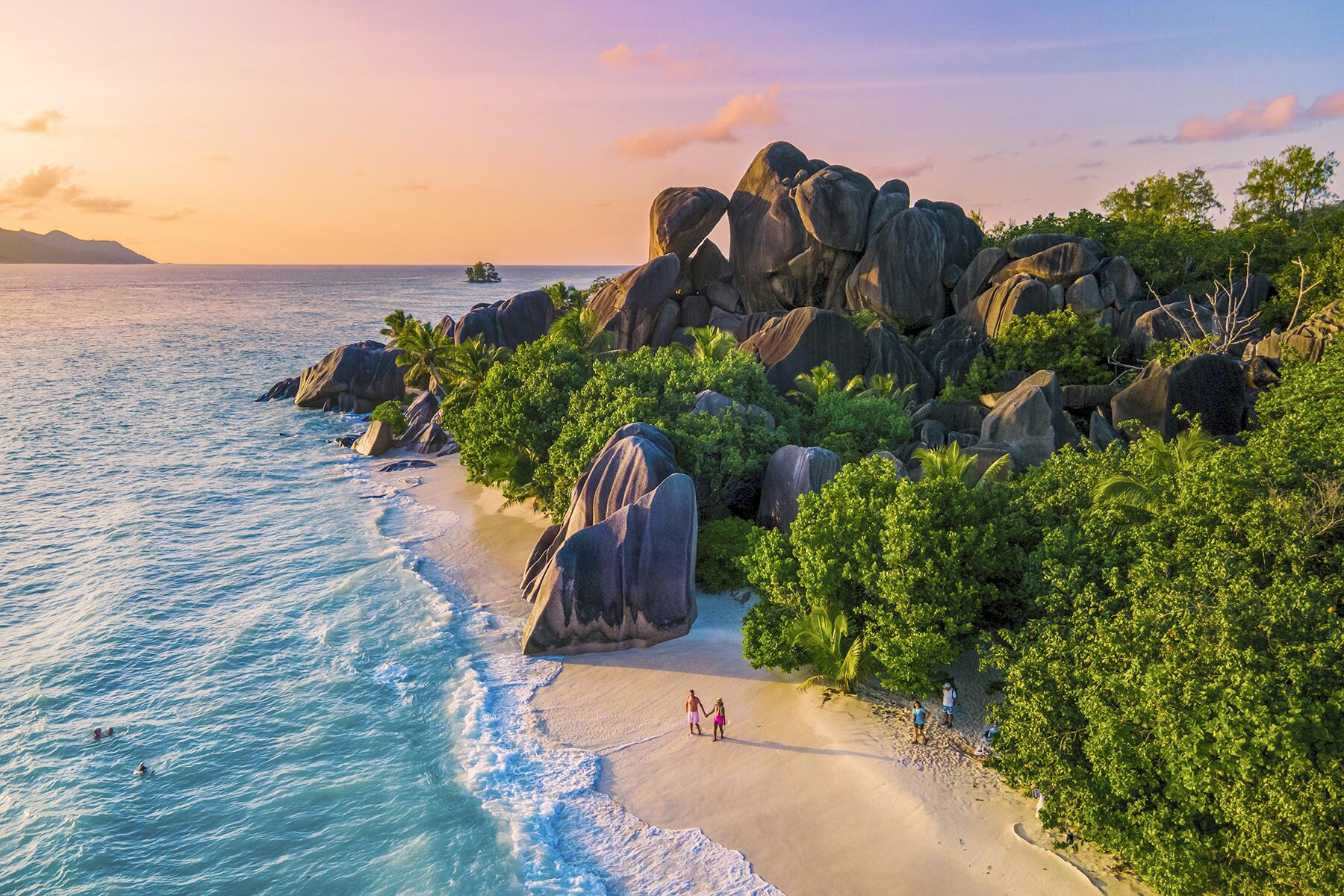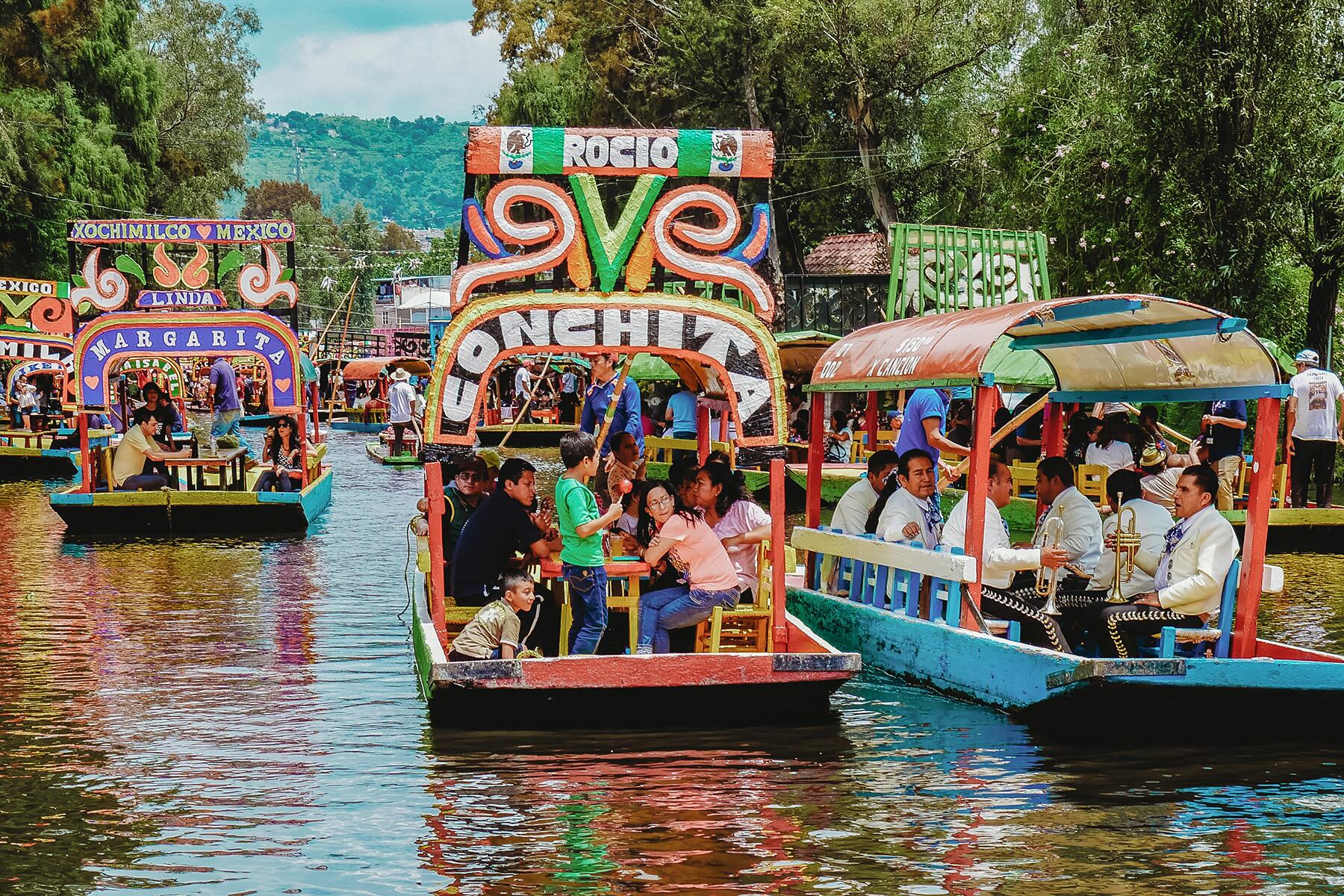Hop aboard a colorful gondola and sail down the Aztec-built canals of Xochimilco, a neighborhood in Mexico City.
Currently a canal system with agricultural sites, Xochimilco is an easy and fun place to spend a few hours on the south side of the city. Historically, Xochimilco was a lake where the Aztecs started building manmade chinampas (artificial fields) that have now overtaken the lake and left a canal system behind. These chinampas, created for farming a thousand years ago, are layers on layers of manmade “rafts.” When a raft sunk, the farmers tied another raft to the same location, until that raft sunk and the cycle continued. Now, the once “Floating Gardens of Xochimilco” sits firmly affixed to the bottom of the lake.
The way that most people visit Xochimilco is to spend a few hours on the trajineras (barges) that are pushed through the canal by trajineros (usually local men) using long poles. These brightly painted trajineras are generally considered party boats and on a busy day (frequently Sunday afternoons) they fill the canals.
A quick online search will show you a number of available tours of Xochimilco. On many of these tours, the operator will pick you up at your hotel or a local meeting point and take you to Xochimilco for a couple of hours on a trajinera. Some even add additional experiences like visiting Casa Azul, The Frida Kahlo Museum. These tours are the easiest way to experience Xochimilco, but if you’d like to design your own day, here’s what you need to know.
Recommended Fodor’s Video
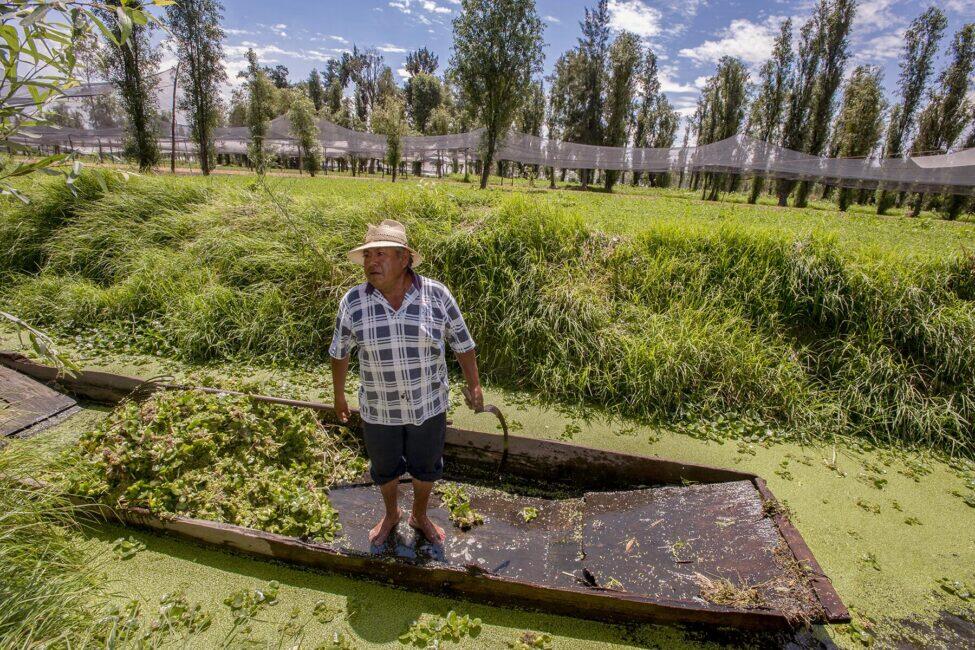
How to Get There
The trajineras leave from multiple embarcaderos (piers) in the Xochimilco area, but if you tell your Uber or taxi driver that you want to go to the Xochimilco Embarcaderos, you’ll end up in the right place. If traffic in the area is bad, a taxi driver might drop you off at a different embarcadero, but don’t worry as any of the piers are a great place to start for the typical trajinera experience.
As you get closer to the embarcaderos, you’ll see young men walking in and out of traffic with “official badges” selling you tours or spaces on trajineras. No need to buy from them, wait until you get to the actual embarcadero. Each of the piers/embarcaderos have signs with a price list based on the length of time and your desired destination. The prices listed are negotiable, even if they appear not to be.
Usually, someone will approach you to see if you are interested in a trajinera and negotiate a rate with you. Once you agree on a price, they will then walk you over to your trajinera and trajinero. It’s rare that the person you agree to a time, route, and price with is the same person who will take you out on the water. Before getting on the trajinera, confirm that the trajinero taking you out has the same understanding of the price and the journey requested as you do. You’ll pay the trajinero at the end of your experience, and you typically pay per trajinera and not per person. For two hours on a trajinera (up to 20 people), expect to be quoted about 1,000 pesos (around $50 USD).
When you‘re negotiating, remember to be clear that you are paying per trajinera or per person based on what you’re looking for. More importantly, be considerate about what you’re negotiating for. A trajinero is going to manually push you through canals for several hours out in the sun. In addition, due to the pandemic, tourism has been down, and business in the canals has been low. While it might be tempting to try to negotiate for the absolute lowest rate possible, this would be a great time to be more generous.

What to See in Xochimilco
Most people coming to Xochimilco will want to spend an hour or two on the water with no specific destination in mind. This is ideal if you just want to spend time hanging out with your friends and family. But, If you want to visit a specific destination, you have to agree to that before you get on the water. One of the popular destinations people seek is Isla de las Muñecas (Island of the Dolls), a spooky chinampa with a tragic backstory. Another destination is the ajoloterias, the breeding and care locations for the endangered axolotl, a sometimes translucent amphibian native to Xochimilco. Both of these destinations have separate entrance fees, so bring some extra pesos if you plan on visiting.
Food & Drink
Just as food is central to Mexico City culture, it’s central to the experience in Xochimilco. Most families coming to the area pack picnic lunches and coolers of drinks. If planning a picnic isn’t your thing, there are easier options. The Xochimilco embarcaderos are full of food stalls, serving a variety of local cuisine. If you forget to stock up before you make it onto the trajinera, you’re still in luck. Along the way, vendors will row their canoes up to your trajinera offering tacos, quesadillas, and other food for sale.
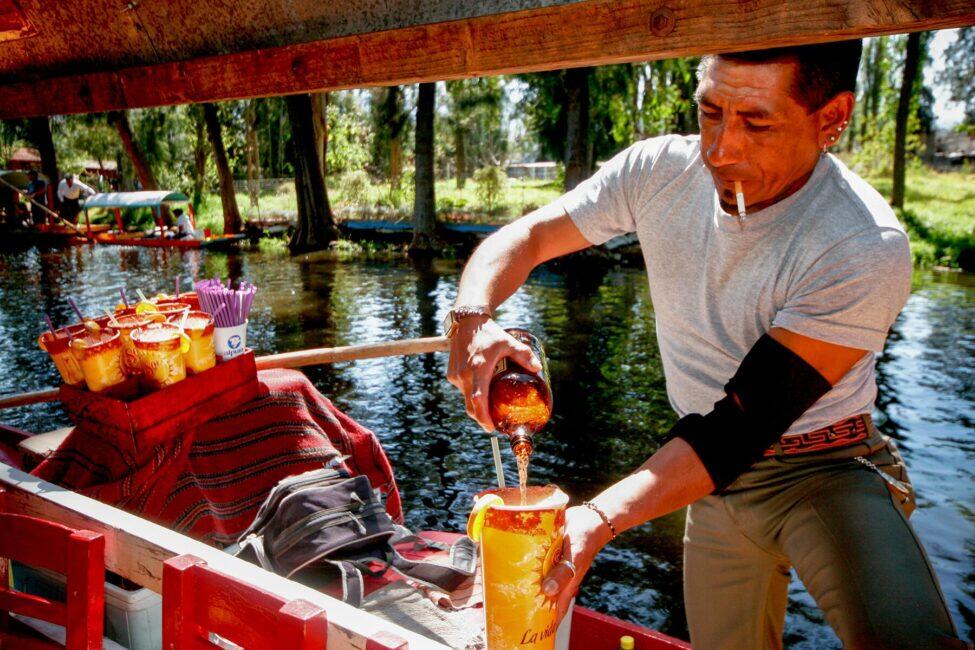
INSIDER TIPHoping to imbibe? The same rules apply here. Bring your own, buy on the dock, or buy micheladas or beers from vendors rowing through the canals.
Experiences & Entertainment
Many visitors to Xochimilco bring their own portable speakers and blast their preferred music as they glide along the canal. This is part of the fun as each passing group joins in a socially-distanced party with their neighbors. You may even see local dogs jump from barge to barge. On a typical day, you’ll also see trajineras full of mariachis who will come up to your trajinera and offer to play a song for you. There are also often mariachi bands on the edges of some of the chinampas that you can stop to listen to.
While the trajineras are the best way to experience Xochimilco, there are other ways to make your way through the canals. Through any of the usual tour platforms (Airbnb Experiences, Viator, etc.) you can find a variety of Xochimilco excursions that are not the typical “party on a trajinera.”
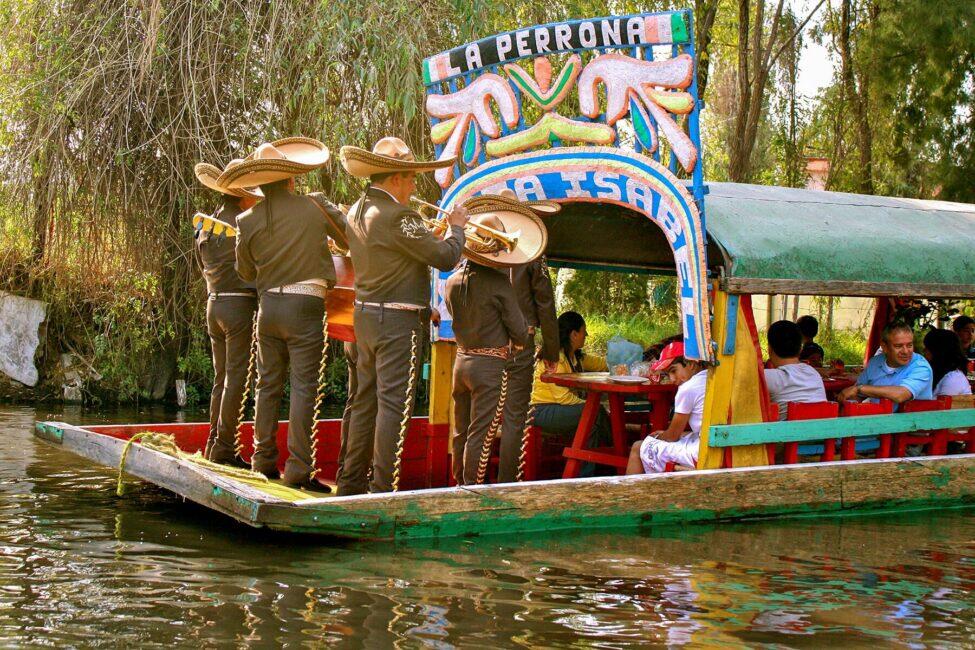
Some of the experiences now available include food tours focusing on locally grown crops, axolotl tours, kayaking through the canals, bee tours, embroidery picnics, and photography tours. You can also see how the locals in the area integrate Xochimilco into their daily lives. By the Cuemanco embarcadero, you’ll see multiple futbol fields, full of fans and teams vying for a win. You’ll also see motorboats operating as water taxis, laden with people and supplies.
Xochimilco is a popular destination for visitors and Mexico City locals because it’s a great way to get outdoors, spend time with people you enjoy, and see more nature than you might typically see in the city center. While tours starting at your hotel are available, planning your own visit will cut down on expenses and prove more of an adventure.
What to Know Before You Go
– If you want to avoid crowds on the water, skip going on Sunday afternoons.
– Since Xochimilco is on the south side of the city, try pairing your time there with a visit to one of the other southern sites, like Coyoacan, Museo Anahuacalli, or Museo Frida Kahlo.
– Depending on the length of your experience, you might need a bathroom break. Some can be found on the bank of the chinampas. Bring change (usually 5 pesos/person) to stop and use one if you need it.
– Xochimilco is a resting stop for many types of migratory birds, so keep an eye out for the wildlife.
– Cuemanco Plant Market is the largest plant market in Latin America, so it’s worth a stop when you’re in the area.
– Do not jump, fall, or otherwise put any part of your body in the water. It’s not fresh and certainly not clean.


